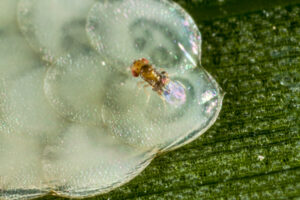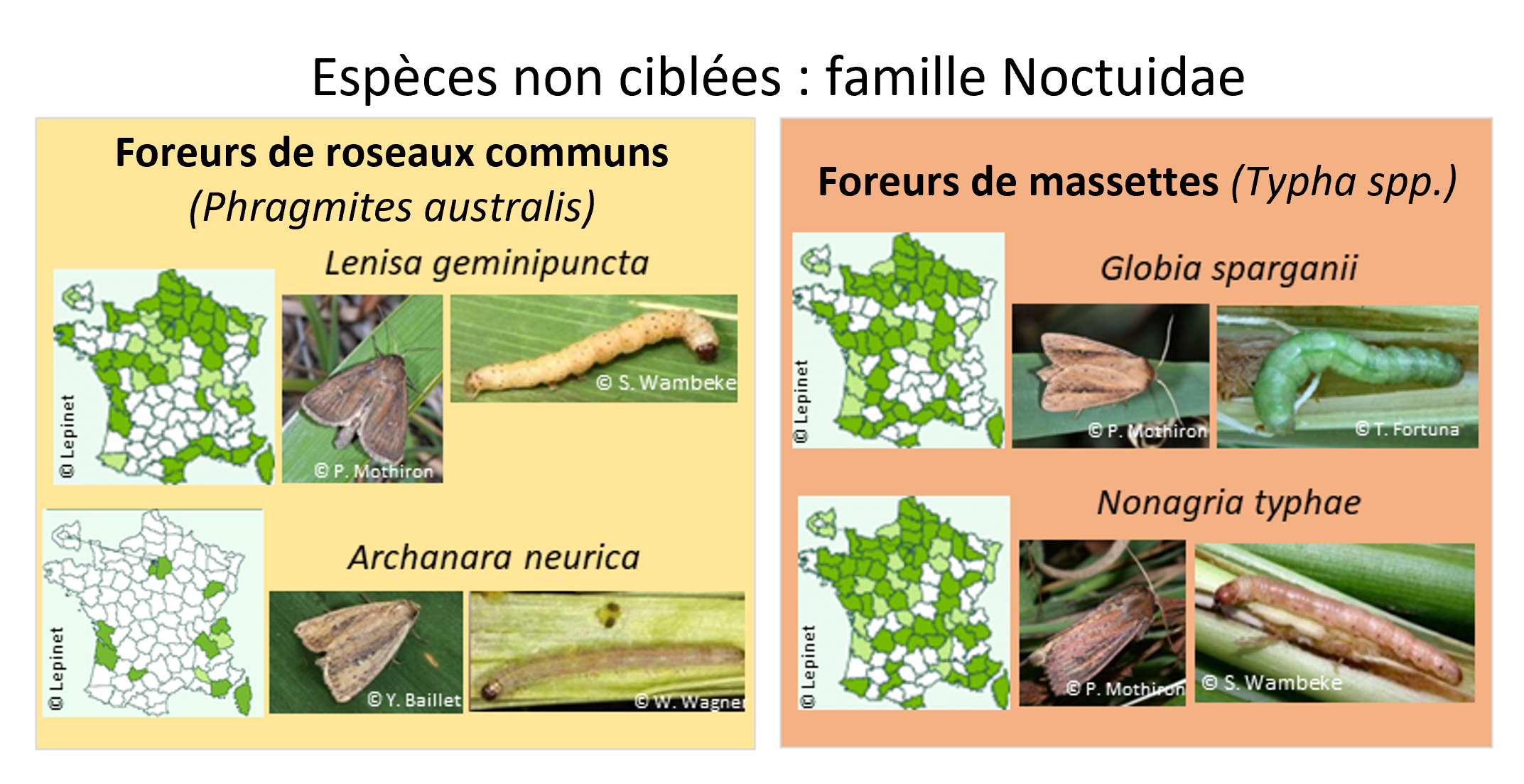Environmental risks: establishment of risk assessment
The environmental risk posed by the introduction of an exotic species will depend on its ability to establish itself in the long term. As Cotesia typhae is a species described only in East Africa (Kaiser et al. 2015), it is not accustomed to the cold temperatures that can be encountered in winter in France. Consequently, its activity, development and survival at low temperatures could represent the main barrier to its long-term establishment in France. This knowledge was acquired by exposing the different stages of the insect to different ranges of winter temperatures over different periods of time.
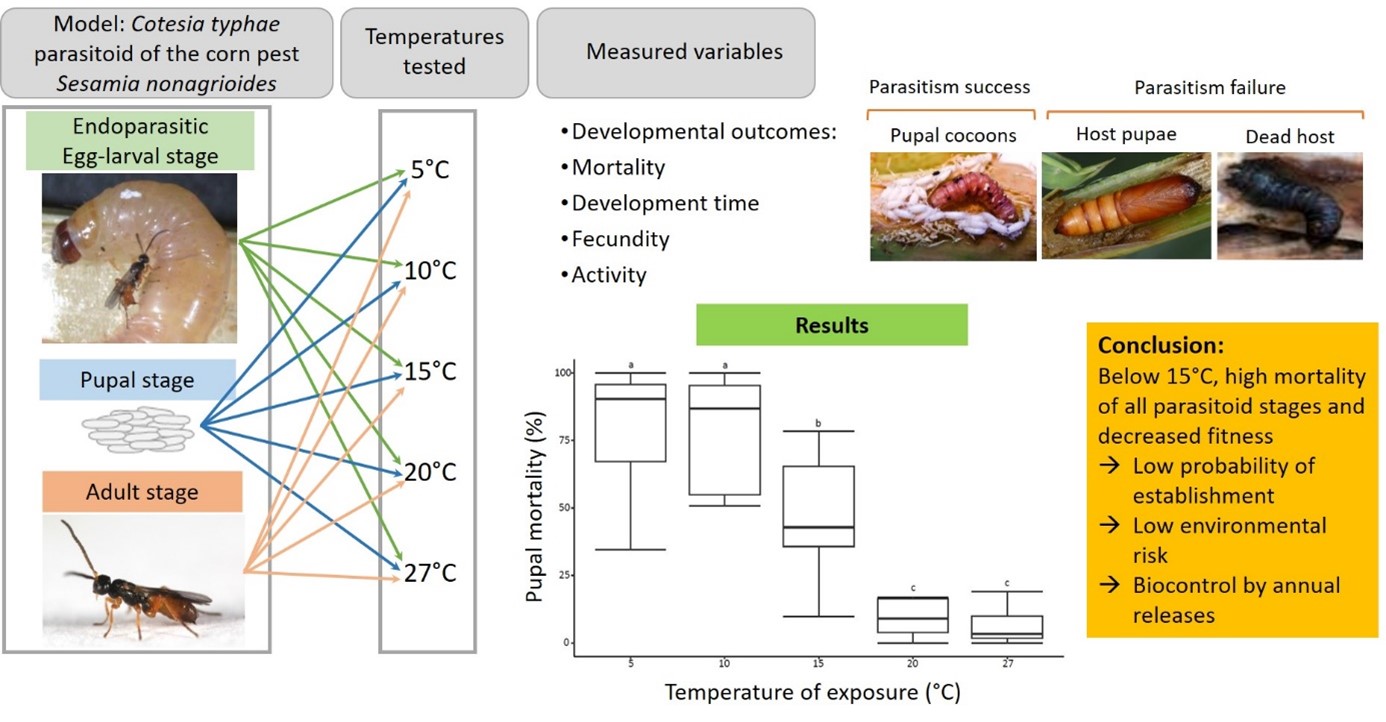
In addition, exposure to low temperatures has non-lethal effects on parasitoid fertility. (Bressac et al. 2023)
All the results point to a low probability of winter survival, since temperatures below 15°C result in high mortality at all stages of the insect. Considering that two weeks spent at 10°C or less on average would prevent any survival, it has been possible to calculate the percentage of non-permissive winters by department, between 2000 and 2020:
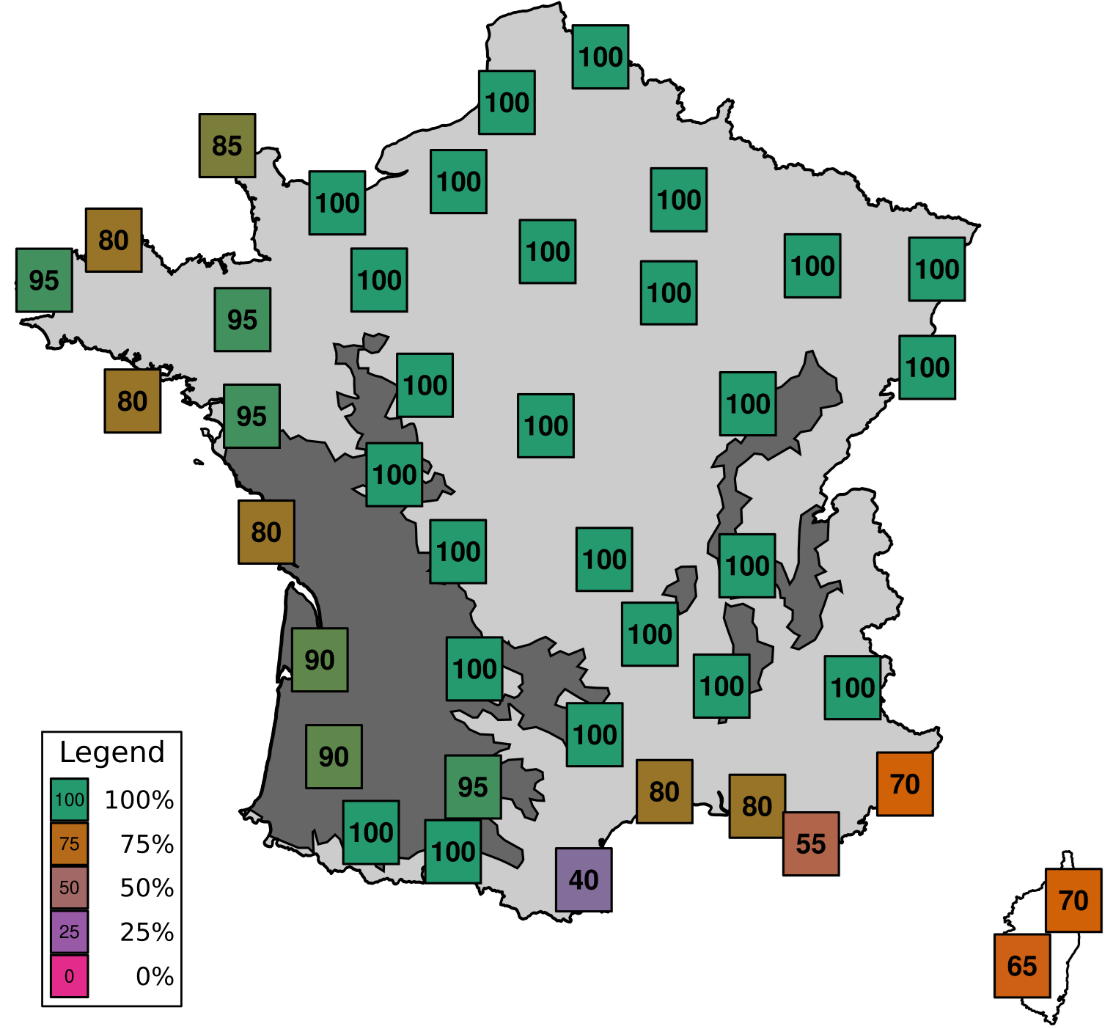
Regions where the sesamid is a maize pest are shown in dark grey. In some of these départements, the winter survival rate of C. typhae may not be zero and will be estimated following the field releases planned as part of the Biocosma project.
Parasitic efficiency (in greenhouse conditions)
Four greenhouse experiments have been conducted to test the parasitoid efficiency. The first two trials aimed at estimating immediate post-release efficiency depending on the temperature and the parasitoid density. Results showed that the parasitoid was active between 15 and 25°C and the parasitism rate varied with the density of parasitoids released. A third and a forth trial was conducted to evaluate long term efficiency. The third trial showed that one release of the parasitoid at mixed developmental stages allowed a stable parasitism rate of 58% in average along 3,5 months, during which one generation of S. nonagrioides has developed. An improved protocol used for the fourth trial resulted in an almost full suppression of the pest by C. typhae over the same duration (1), and significant improve of plant health (2). Long lasting activity of C. typhae following a single release is very encouraging (Fortuna et al. Phloème 2022).
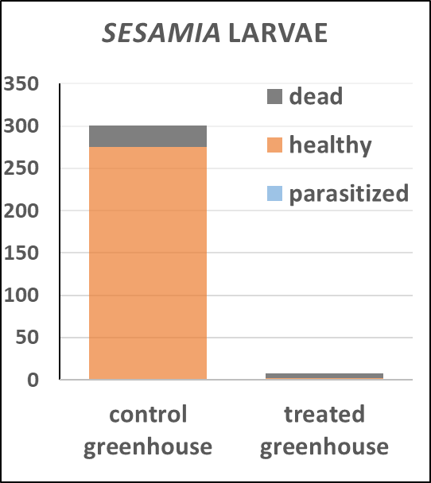
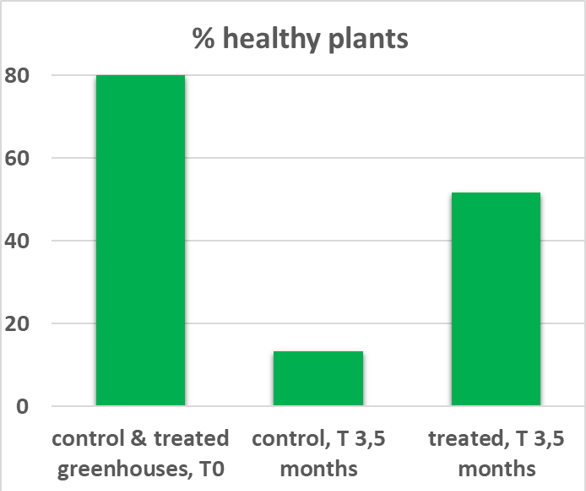
Methodology of greenhouse assays
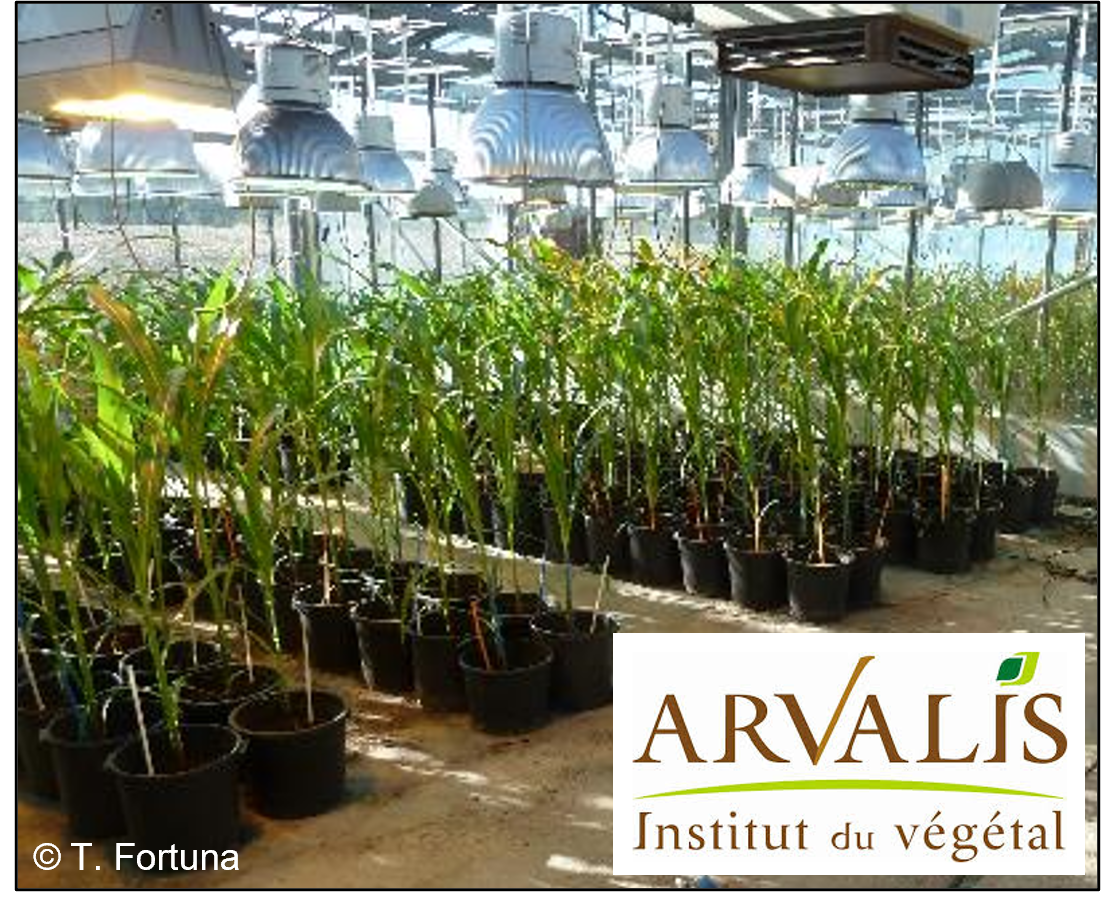
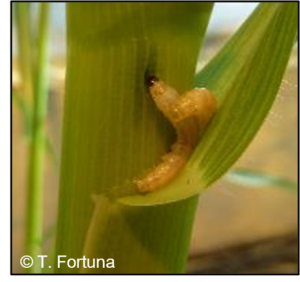
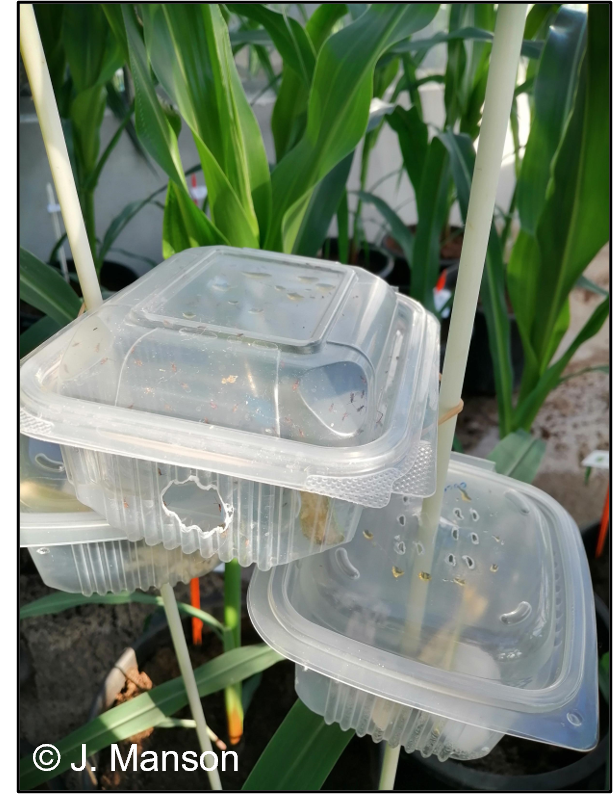
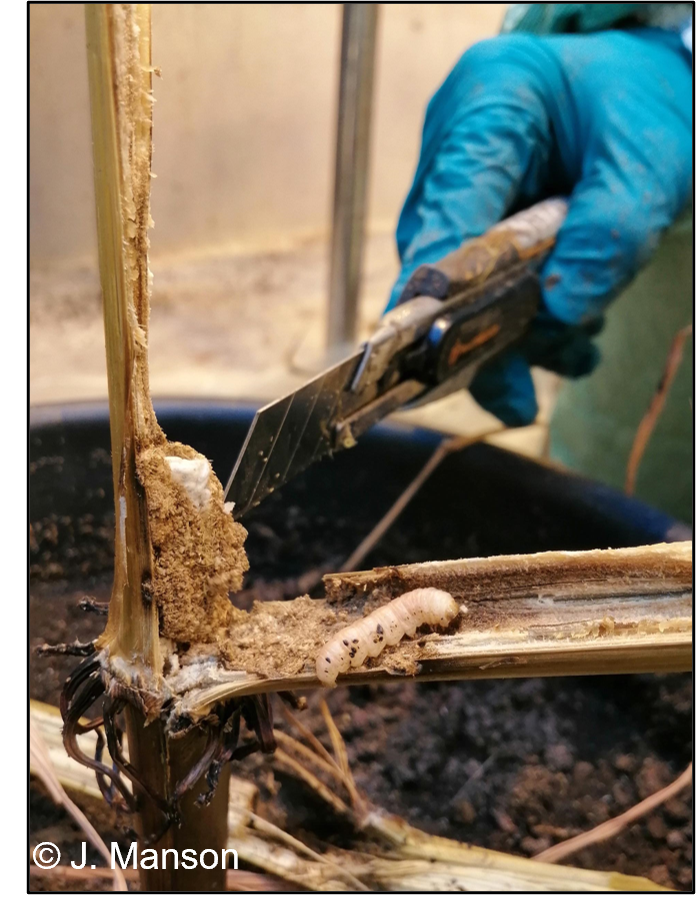

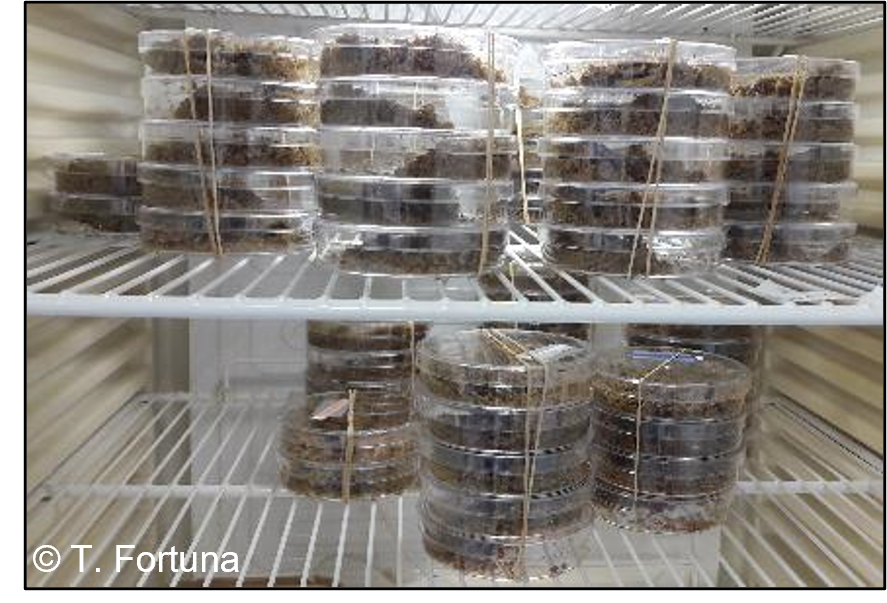
Parasitoids production
The purpose is to develop methods to mass rear the potential biological control agent (and its host) with a perspective of industrial production and commercialization. The available laboratory-scale techniques for continuous rearing of S. nonagrioides on artificial diet and its parasitoid C. typhae (Giacometti, 1995; Poitout et al., 1972; Overholt et al., 1994) was used as a starting point. Because the demand will be seasonal in France, the aim is to be able to shift from a baseline of C. typhae production of about 1000 females/week to 50 times more. In fact, 50,000 females would allow to treat fifty hectares of maize based on Cotesia flavipes large scale use on sugarcane in Brazil (Dinardo-Miranda et al., 2014), at a maximum cost of 10-15 €/Ha to meet recommendation after a market analysis done by Bioline AgroScience (France).
Improvements of environmental conditions (optimal temperature and relative humidity) and of parasitism yield as well as better pathogens (pathogens-free rearing colonies) and inbreeding (regular infusion of wild/field specimen) management are under progress at icipe (International Center of Insect Physiology and Ecology) to attain this objective. In addition, studies are also undertaken to develop a protocol for parasitoid's storage, so the production would be sufficient during the peak of orders.
References:
- Dinardo-Miranda et al. 2014 : https://www.scielo.br/j/brag/a/TQmDyGGvz94FQdyHSV6MMvj/?lang=en
- Giacometti R 1995. Rearing of Sesamia nonagrioides Lefebvre on a meridic diet (Lepidopdera Noctuidae). Redia LXXVIII (1): 19-27.
- Overholt WA, Ochieng JO, Lammers, P, Ogedah K 1994. Rearing and field release methods for Cotesia flavipes Cameron (Hymenoptera: Braconidae), a parasitoid of tropical Gramineous stem borers. International Journal of Tropical Insect Science 15: 253–259.
- Poitou HS, Le Rumeur C, Buès R 1972. Élevage sur milieu artificiel simple de deux Noctuelles parasites du Coton, Earias Insulana et Spodoptera littoralis. Entomologia Experimentalis et Applicata 15: 341-350.
Market analysis
Sesamia nonagrioides is present all around the Mediterranean see, particularly in France, Spain, Portugal, Italy and Greece, where the area affected by this borer is estimated at around 450,000 ha. The most affected country is France, with 300,000 ha concerned (mainly grain maize), mainly in the South West, the Atlantic coast and the Rhone Valley. However, its range is gradually extending towards more northern regions due to climate change.
The pest causes direct loss of yield, which can reach on average 11% by strong pest pressure, as well as loss of quality of the harvest due to attacks at the end of the maize cycle, increasing the risk of development of Fusarium spp., which produce mycotoxins.

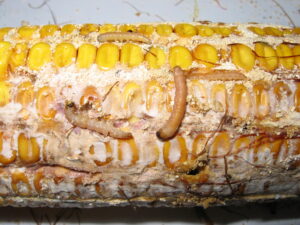
Currently, no effective biocontrol solution is authorized to control the 2nd generation of this pest, which is the most damaging. Crops are mainly protected with chemical insecticides based on pyrethroids or anthranilamide. The current cost of this protection varies between 30 to 45 €/ha depending on the specialties used (product plus application). It represents, at the current price of maize, an expenditure equivalent to approximately 2 quintals of grain. Sesamia biocontrol can therefore be economically viable for medium to high damage levels.
In addition, the beneficial agent C. typhae could be used in conjunction with the release of Trichogramma (micro Hymenoptera) against the European corn borer Ostrinia nubilalis because this pest is often present with the Sesamia. Both species are often called respectively European and Mediterranean corn borer.
